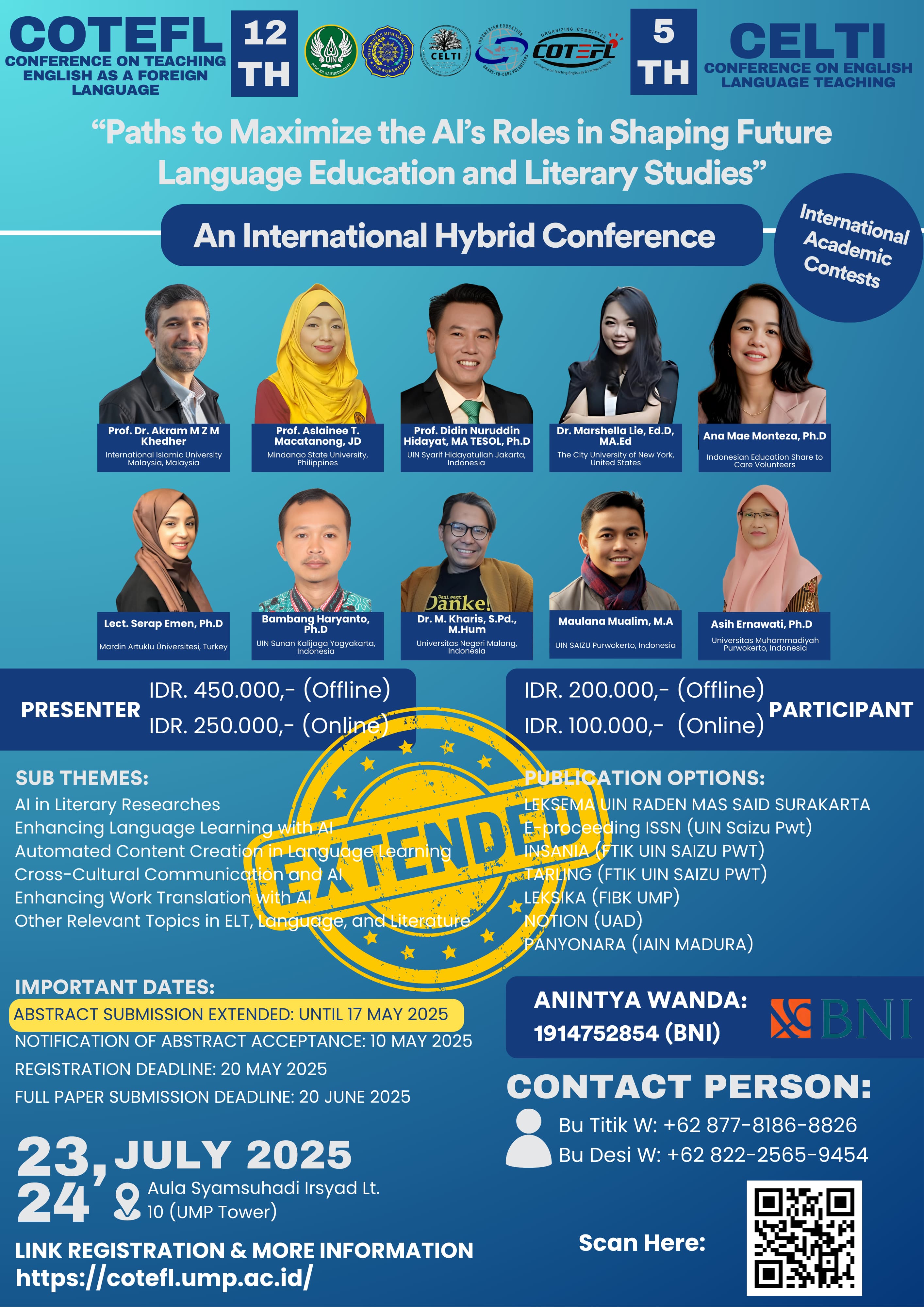THE IMPACTS OF STUTTERING SHIFTS TO THE TRANSLATION QUALITY OF THE ADVENTURE OF TINTIN COMICS
DOI:
https://doi.org/10.22515/ljbs.v4i1.1438Keywords:
stuttering shift, Captain Haddock, translation qualityAbstract
This article aims to discuss how stuttering utterances are translated from English to Bahasa Indonesia. Data in the form of stuttering utterances spoken by Captain Haddock, a character in The Adventure of Tintin comic series, were collected to see how the translator decided to convert those utterances into Bahasa Indonesia. The method employed in this research is the qualitative-descriptive in which the data were taken from two sources(English and Bahasa Indonesia). The finding shows that there are three categories of stuttering initiator namely:Â intoxicated, emotions, and situations. Each category is classified based on its types, namely repetitions, hesitations, and fillers. In addition, the finding also shows that each type of stuttering was placed in a different concept on its target language named shifting. It can further be classified into preserved, altered, and omitted. Each of them affects the meaning and the message of stuttering utterances in the translation version. Finally, the statistic indicates that every type of shifting gives a significant impact to the translation quality.
Downloads
References
Alm, Per A. 2014. “Disorders Review: Stuttering in Relation to Anxiety, Temperament, and Personality: Review and Analysis with Focus on Causality.†Journal of Fluency Disoreder: 2
Bakti, M. 2008. “Speech Disfluencies in Simultaneous Interpretation.†Selected Papers of hte CETRA Research Seminar in Translation Studies Retrieved from <https://www.arts.kuleuven.be/cetra/papers/papers.html>
Belyk, Michel, Shelly Jo Kraft, & Brown, Steven. 2014. “Stuttering as a Trait or State: An ALE Meta-analysis of Neuroimaging Studiesâ€. European Journal of Neuroscience: 1
Catford, JC. 1965. A Linguistic Theory of Translation. Oxford: Oxford University Press
Gruyter, De. 2018. Translation Zone(s): A Stuttering: An Experiential Approach to Linguistic Hospitality, 1 (2): 164
Guitar, B. 2014. An Integrated Approach to Its Nature and Treatment (4th Edition). Philadelphia: Lippincott Williams & Wilkins
Hollien, HG, C. Dejong, R. Martin, K. Schwartz & Liljegren. 2001. “Effects of Ethanol Intoxication on Speech Suprasegmentalsâ€. Acoustical Society of American Journal, 110 (6): 3198-3206
Hough, J, Y. Tian, L. Ruiter, S. Betz, S.Kousidis, D.
Schlangen & J. Ginzburg. 2016. DUEL: A Multilingual Multimodal Dialogue Corpus for Disfluency, Exclamations, and Laughter. Retrieved from <https://pub.unibielefeld.de/download/2903080/2903084>
Johnson, W. 1959. The Onset of Stuttering. Minneapolis: University of Minnesota Press
McCloud, S. 1993. Understanding Comics: The Invisible Arts. New York: Kitchen Press
Miller, JF, S. Long, N. McKinley, S. Thormann, MA. Jones & A. Nockerts. 2005 Language Sample Analysis II: The Wisconsin Guide. Madison: Wisconsin Department of Public Instruction: 1-8
Nababan, MR. 2008. Teori Menerjemah Bahasa Inggris. Yogyakarta: Pustaka Pelajar
Nababan, MR, A. Nuraeni, Sumardiono. 2012. “Pengembangan Model Penilaian Kualitas Terjemahanâ€. Kajian Linguistik dan Sastra, 24 (1): 39-57
Neubert, A. 2004. “Case Studies in Translation: The Study of Translation.†Across Language and Culture, 5 (1): 5-21
Nida, EA & CR. Taber. 1974. The Theory and Practice of Translation. Leiden: The United Bible Societies
Plevoets, K & B. Defrancq, 2016. “The Effect of Informational Load on Disfluencies in Interpreting.†Translation and Interpreting Studies, 11 (2): 202-224
Remi, GP. The Adventure of Tintin: The Series. Retrieved from
Remi, GP. Kisah- Kisah PetualanganTintin. Serial Komik. Retrieved from <https://koleksi-tintin.blogspot.com>
Santosa, Riyadi. 2014. Metode Penelitian Kualitatif Kebahasaan. Surakarta:UNS Press
Spradley, James P. 1980. MetodeEtnografi. Yogyakarta: Tiara Wacana.
Sutopo, HB. 2006. Metodologi Penelitian Kualitatif. Surakarta: UNS Press
Tissi, B. 2000. “Silent Pauses and Disfluencies in Simultaneous Interpretation: A Descriptive Analysis.†The Interpreters’ Newsletter, 10 Edizioni.Trieste: Università di Trieste
Downloads
Published
Issue
Section
License
The copyright of the received article shall be assigned to the publisher of the journal. The intended copyright includes the right to publish the article in various forms (including reprints). The journal maintains the publishing rights to published articles.
In line with the license, the authors and users (readers or other researchers) are allowed to share and adapt the material only for non-commercial purposes. In addition, the material must be given appropriate credit, provided with a link to the license, and indicated if changes were made. If authors remix, transform or build upon the material, authors must distribute their contributions under the same license as the original.






